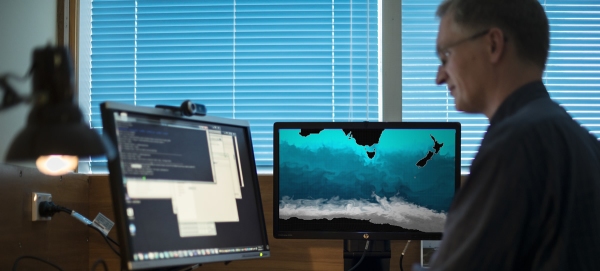The Deep South National Science Challenge is one of New Zealand’s most audacious collaborative projects in recent times.
The NIWA-led project aims to create a new numerical Earth System Model that more accurately predicts future changes in New Zealand’s climate, and to deliver the information to New Zealanders to create real-world, real-time solutions.
It is doing that by combining science, mathematics, social science, community development, politics, business, infrastructure, and communication.
The multi-faceted project has seen scientists meet with different industries and groups that will be impacted by the research. Engagement has varied from an elaborate art exhibition at Auckland Museum (‘Antarctica – while you were sleeping’), a partnership with New Zealand Geographic, and collaboration with industry groups and education institutions.
The future of insurance
The Insurance Council of New Zealand is one of the project’s leading partners, reflecting the need for New Zealanders to start long-term thinking about safeguarding against climate change impacts.
“Most of us are concerned with immediate and tangible risks such as burglary or a car crash, but climate change is an increasingly significant issue – for the public, and for insurers and re-insurers,” said Insurance Council of New Zealand Chief Executive Tim Grafton.
“The industry insures a lot of assets globally that will be impacted by climate change, and we are a significant investor in assets that may be vulnerable, including carbon-based equities. Liability insurance will be impacted, particularly for local councils that may find themselves accountable for infrastructures that are unable to cope with rising sea levels or king tides.
“We are keen advocates of the adaptation model: reducing risk, building resilience. NIWA’s work will allow us to scope the size of the risk in different areas to a very precise level, which will inform our response for policies for how we can transfer the risks.”

A catalyst for change
Despite the doomsday dialogue that traditionally dominates climate-change discussion, Deep South researchers and designers have given Māori farmers a beacon of hope.
Led by Principal Investigator Dr Huhana Smith, the Adaptation Strategies to Address Climate Change Impacts on Coastal Māori Communities project researchers ran hui and wānanga with iwi farmers, shareholders and whanau trust boards within the Kāpiti and Horowhenua districts to map what climate change could mean for their areas within different time periods.
The farmers were then presented with an exhibition (in a disused dairy shed in Kuku, Horowhenua) of different visual solutions incorporating diversified farming practices, and new building designs created by Victoria University of Wellington Architecture and Design students.
They exemplified how iwi-led farming could be adapted to be more resilient and profitable in the future. In a video summarising the project, student Ally Jackson said: “Climate change can be a positive influence, a catalyst for change.”
[This feature appeared in Water & Atmosphere 19]

